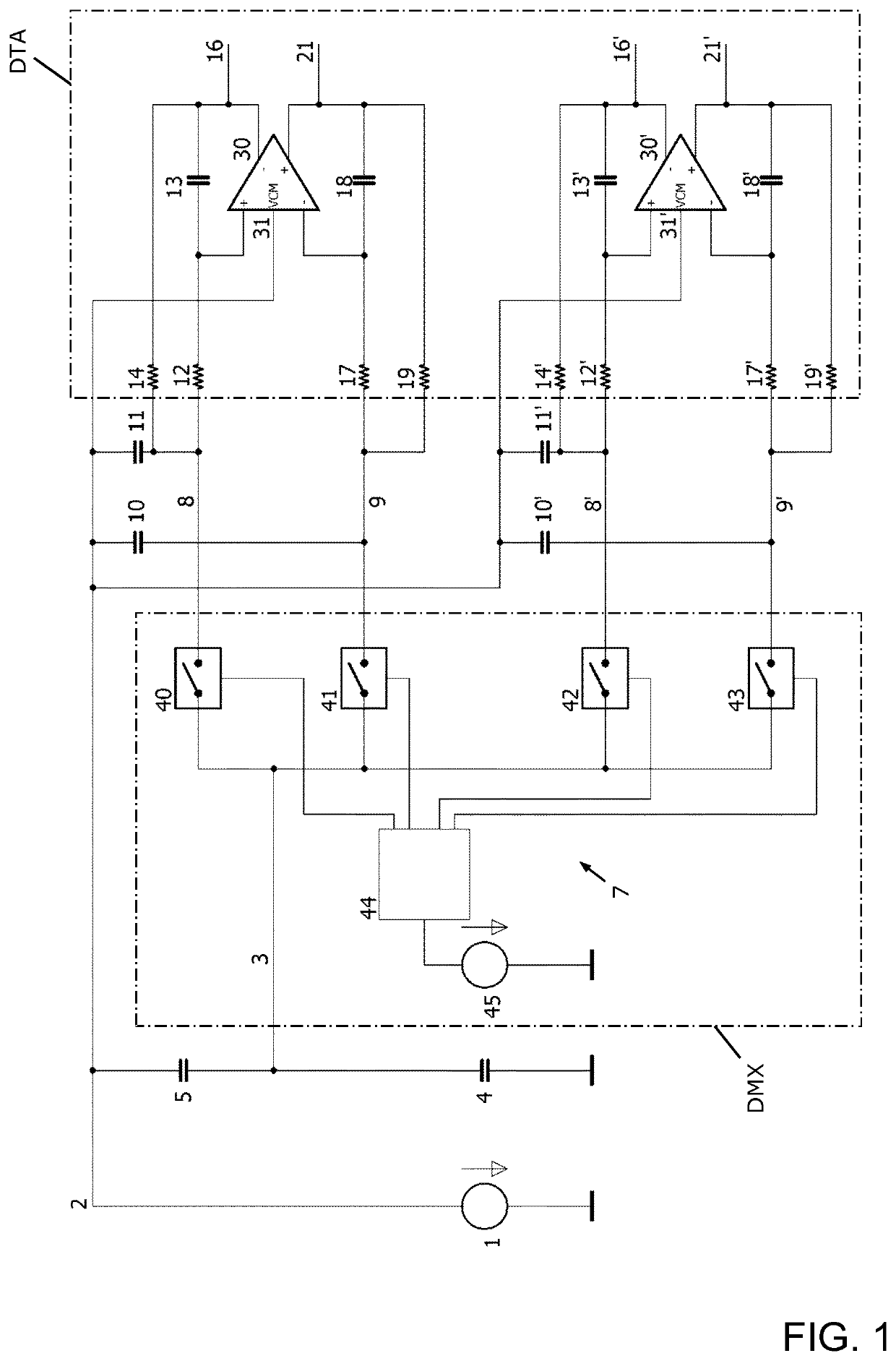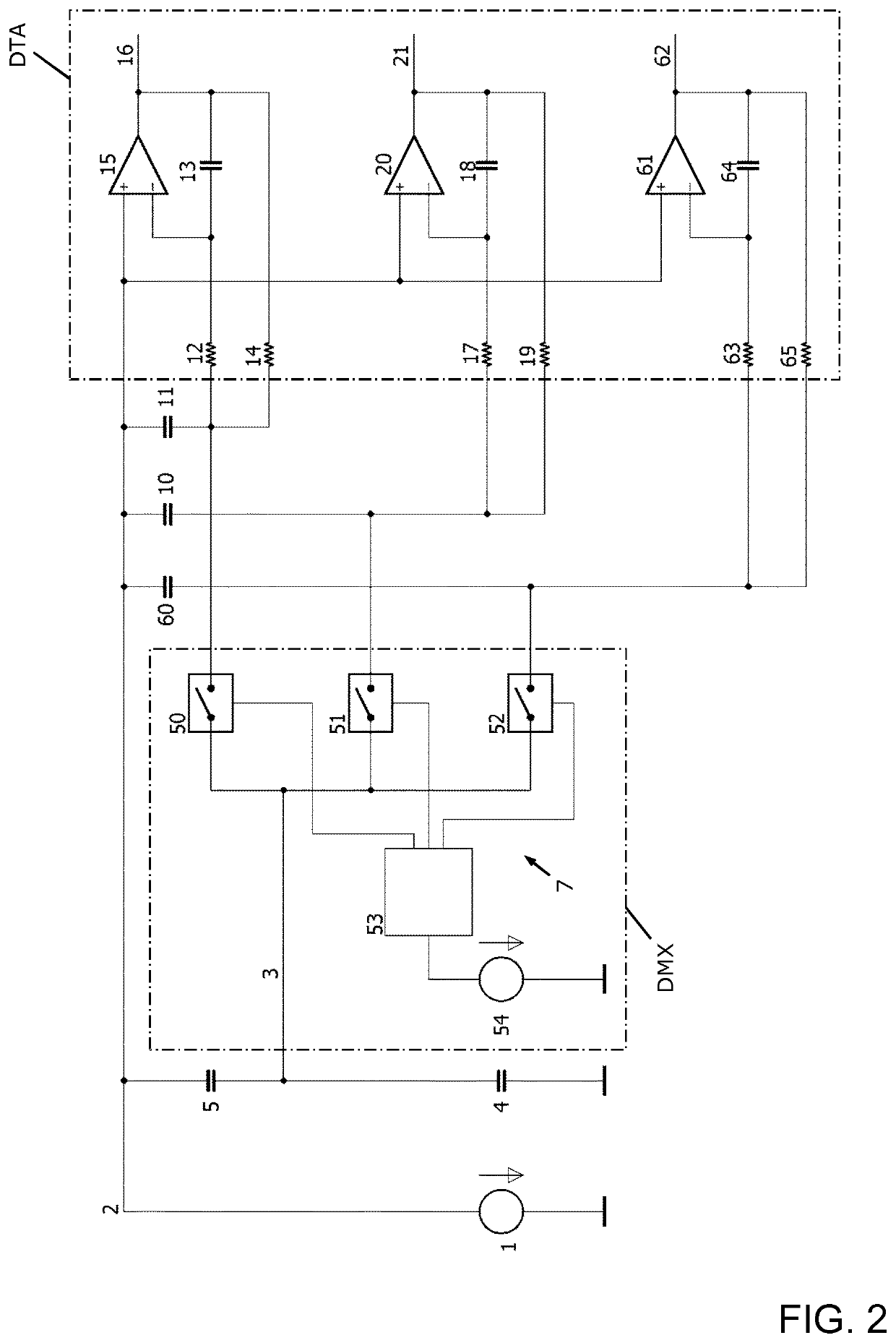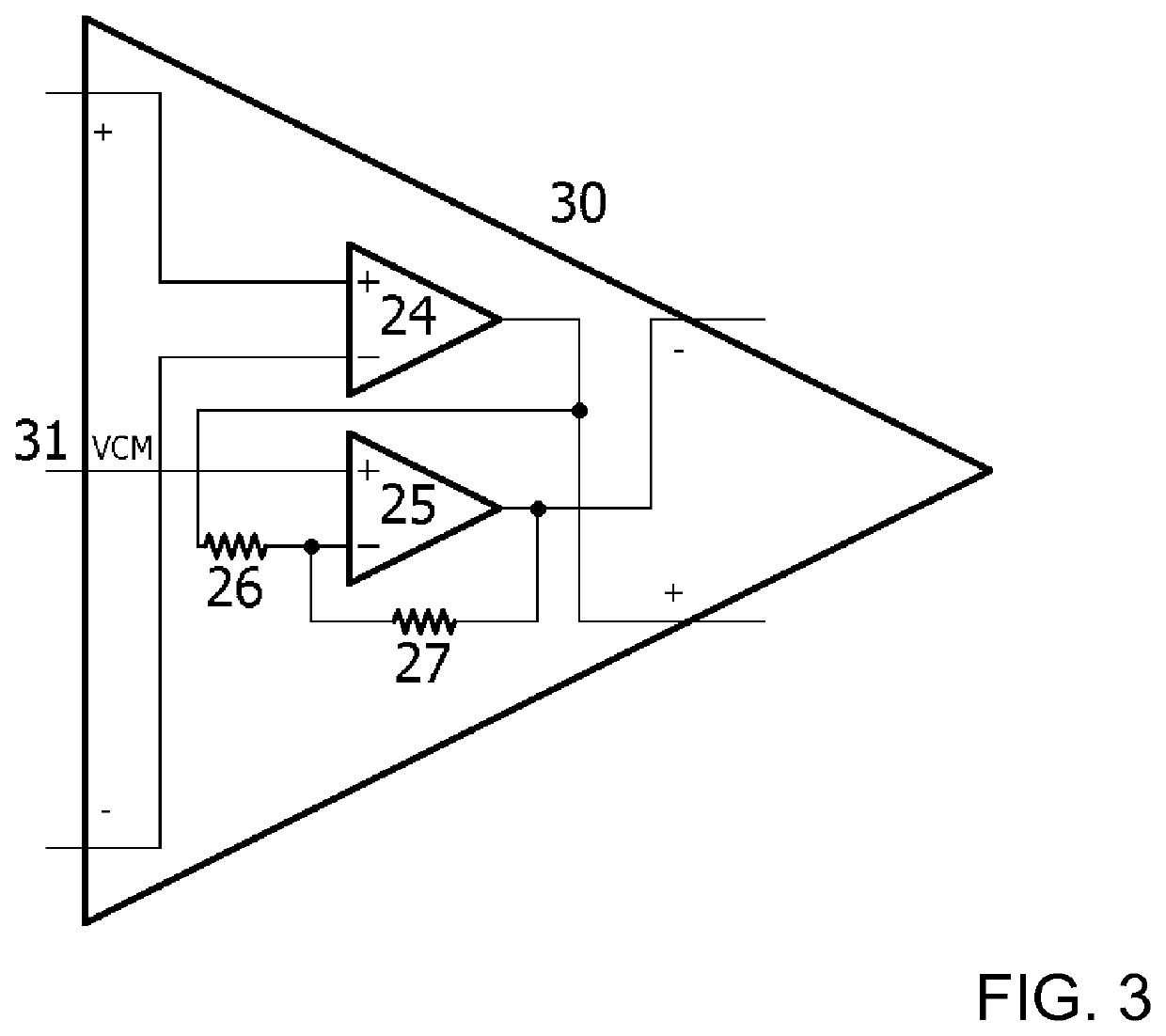Robust, low-cost capacitive measurement system
a capacitive measurement and low-cost technology, applied in the field of capacitive measurement circuits, can solve the problems easy disturbance of capacitive sensing devices, and achieve the effects of reducing the impact of a sense-to-guard impedance on the measurement accuracy, fast determination of the complex sense current, and less susceptibl
- Summary
- Abstract
- Description
- Claims
- Application Information
AI Technical Summary
Benefits of technology
Problems solved by technology
Method used
Image
Examples
Embodiment Construction
[0068]FIGS. 1 and 2 show layouts of possible embodiments of a complex current measurement circuit in accordance with the invention, configured to determine a complex sense current of a guard-sense capacitive sensor operated in loading mode.
[0069]The complex current measurement circuit comprises a periodic signal voltage source 1. It generates a periodic voltage, which in this specific embodiment is a sine wave with an operating or fundamental frequency between 10 kHz and 100 MHz, at an output port. The output port is electrically connected to a guard antenna electrode of the capacitive sensor at guard node 2.
[0070]The complex current measurement circuit further comprises a demultiplexer circuit DMX having a demultiplexer 7, a signal input line and a plurality of four signal output lines, and a differential transimpedance amplifier circuit DTA. The differential transimpedance amplifier circuit DTA includes four differential signal input lines 8, 8′, 9, 9′ and differential signal outp...
PUM
 Login to View More
Login to View More Abstract
Description
Claims
Application Information
 Login to View More
Login to View More - Generate Ideas
- Intellectual Property
- Life Sciences
- Materials
- Tech Scout
- Unparalleled Data Quality
- Higher Quality Content
- 60% Fewer Hallucinations
Browse by: Latest US Patents, China's latest patents, Technical Efficacy Thesaurus, Application Domain, Technology Topic, Popular Technical Reports.
© 2025 PatSnap. All rights reserved.Legal|Privacy policy|Modern Slavery Act Transparency Statement|Sitemap|About US| Contact US: help@patsnap.com



